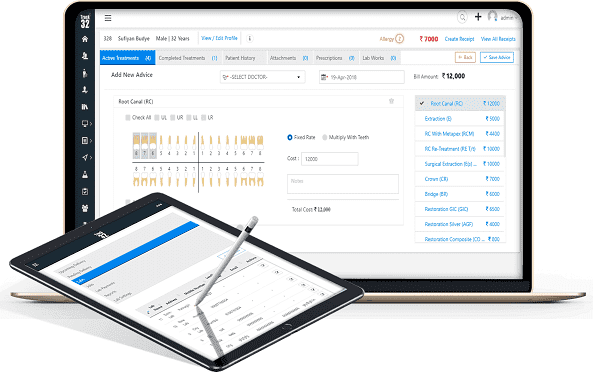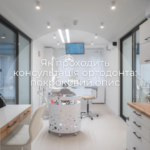Surgical dentistry is one of the most dynamically developed branches of medicine, in which innovative technologies play a key role. The current state of this industry is characterized by rapid changes and the introduction of the latest methods and tools, among which software occupies a special place. It not only improves the results of treatment, but also contributes to greater accuracy and safety of surgical interventions .
The development of software in medicine has deep historical roots. From simple computer programs developed in the second half of the 20th century to process patient data, to today’s complex systems that include 3D modeling, artificial intelligence and machine learning, this path demonstrates incredible progress in the field of medical technology.
Modern software in surgical dentistry allows not only to accurately plan surgical interventions, but also to predict potential risks, adapting the procedures to the individual characteristics of each patient. This became possible thanks to the development of algorithms for processing medical images, computer tomography and other technologies that provide a detailed visual representation of the patient’s anatomy.
In addition, software plays an important role in the learning process. It allows students and young professionals to simulate various surgical scenarios , providing safe and effective training before working with real patients.
The use of software for planning interventions in surgical dentistry provides us with: accuracy of planning, 3D modeling and visualization and most importantly – personalized treatment.
Accuracy of planning
Planning accuracy is a critical aspect in surgical dentistry, and in this context, software plays an extremely important role. Thanks to advanced technology, doctors are able to plan every aspect of surgery in detail, greatly increasing accuracy and reducing potential risks. One of the key elements is the use of 3D modeling. This technology makes it possible to create three-dimensional visualizations of the patient’s teeth and jaws, giving surgeons the opportunity to “see” anatomical structures before the procedure begins. This approach not only simplifies the identification of potentially difficult areas, but also helps to avoid unexpected situations during surgery.
In addition, the software enables the integration and analysis of large volumes of data, including patient medical history, radiographic images, and the results of other diagnostic procedures. This allows surgeons to develop more precise and effective treatment plans, taking into account the unique characteristics of each case.
The software also helps improve communication between medical professionals. Doctors, surgeons, and dentists can effectively share information, which provides a more comprehensive and coordinated approach to patient treatment.
Finally, the use of software in surgical dentistry contributes to the continuous improvement of treatment methods . Analyzing data from previous cases helps to identify trends and possible improvements, which in turn leads to continuous development of treatment standards.
Therefore, the precision of planning provided by the software not only reduces risks and improves treatment outcomes, but also opens new horizons for innovation in surgical dentistry.
3D modeling and visualization
3D modeling and visualization technologies have opened up new possibilities for surgical dentistry, providing surgeons with unique tools for more accurate and efficient treatment planning. These technologies allow not only to visualize future interventions in advance, but also to significantly increase the accuracy and safety of surgical procedures. Using 3D modeling, surgeons can create detailed three-dimensional images of a patient’s jaw and teeth. This allows for in-depth analysis of anatomical features, identifying potential problems and planning the most effective access routes and interventions. The use of these models also contributes to a more accurate choice of implants , ensuring an ideal response to the anatomical features of the patient.
In addition, 3D visualization helps improve the planning of complex surgical procedures. For example, in cases of wisdom tooth extraction or jaw reconstruction, 3D models allow surgeons to assess possible risks in advance and determine optimal methods of intervention. This technology also plays an important role in increasing patient awareness. By being able to visually demonstrate planned procedures on 3D models, patients better understand their diagnosis and treatment, leading to greater confidence and satisfaction with the results.
3D modeling technologies are also facilitating the development of personalized surgical tools and assistive devices. This allows surgeons to have instruments specifically adapted to the specific anatomical and surgical needs of each case.
In conclusion, the introduction of 3D modeling and visualization in surgical dentistry has not only revolutionized approaches to planning and performing surgical interventions , but also significantly increased the level of safety and patient satisfaction, opening new horizons for further innovation and research in this area.
Personalized treatment
Personalized treatment in surgical stomatology is one of the most important directions, which significantly improves the quality and efficiency of medical care. In this context, software plays a key role, allowing doctors to develop individualized treatment plans that take into account the unique anatomical and physiological characteristics of each patient.
This includes the use of advanced technologies of data collection and analysis, such as 3D scanning, radiography, and computer tomography, which allows obtaining a detailed image of the patient’s anatomy. Based on this data, the software can create accurate 3D models that doctors use to plan treatment, from choosing the type of implant to determining the optimal surgical access.
In addition, the software allows you to take into account the patient’s medical history, including previous diseases, allergies, and other factors that may affect treatment. This provides a comprehensive approach to each case, minimizing risks and increasing the likelihood of a successful outcome.
Increasing the role of the patient in the treatment process is another important advantage of the personalized approach. Thanks to the interactive capabilities of the software, patients can be more actively involved in planning their treatment, which contributes to a better understanding of the process and increases the level of trust and satisfaction with medical care.
Software in surgical dentistry plays a crucial role in implementing a personalized approach to treatment. This not only improves clinical outcomes, but also improves patient comfort and satisfaction, and opens up new perspectives for innovation and research in medicine.
Gerasym L.М.
Dronyk I.I.
Palis S.Y.
Departament of Surgical Dentistry and Maxillo-facial Surgery
Bucovinian State Medical Surgery
Migalchan T. I.
Fedkovych Chernivtsi National University













